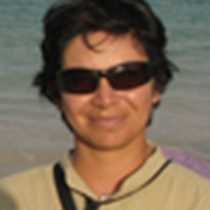Santa Cruz Island
This morning we arrived to Santa Cruz Island and anchored in Academy Bay in the southern realm of this island. After breakfast we headed to the Galapagos giant tortoises breeding center; there we had the opportunity to see tortoises from different islands and the very young ones. This is one of the most important projects run now by the Park Service, to breed tortoises that were in danger of extinction. The project was run first by the Charles Darwin Scientific Station and began in the sixties. At this moment there are 1,064 juveniles in the breeding center. As these juveniles become four years old they will be repatriated to the islands of origin and monitored after they are released.
The center has the assistance of scientists and volunteers that help monitoring and feeding the adults as well as the juveniles. Each year during the mating season, eggs will be collected from the corrals as well as from the islands that still have tortoises with very low numbers.
So far, the center has released a bit more than 5,000 tortoises in the wild and several populations are now in better conditions than before. The work done here has made a big difference in the conservation of the Galapagos giant tortoise population.
After leaving the breeding center we headed to town; here we had a great chance to see how the islanders live, explore the town and of course have the chance to support the local economy by buying some of the local handicrafts or just to enjoy the local coffee while observing the life here.
As the morning was ending we took some buses and drove to the highlands for a walk in to a lava tunnel; this tunnel gave us a sense on how the interior of our planet looks and the way it works. After our exploration of the tunnel we had lunch on a local farm.
This afternoon we headed to a place to look for Galapagos giant tortoises in the wild and we encountered several. Some tortoises were feeding on fresh grasses, others were sleeping and a few were observed walking through the dense vegetation.
Once we left the tortoise area, we then went up higher to a place known as Gemelos; this is a geological formation where two pit craters are separated only by the main road that crosses the island from south to north. We observed these craters as well as the endemic forest of Galapagos giant daisies; this is the most greenery we have encountered and was our chance to see a cloud forest in Galapagos and the land birds that live in it.
We returned to our ship in the late afternoon and had some local musicians and dancers on board to entertain us and show us the cultural aspect of the islands.




